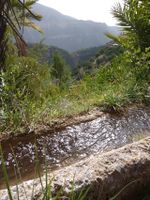Knowledge fuels change
For over a decade, Energypedia has shared free, reliable energy expertise with the world.
We’re now facing a serious funding gap.
Help keep this platform alive — your donation, big or small, truly matters!
Thank you for your support
Difference between revisions of "SPIS Maintain"
***** (***** | *****) m |
***** (***** | *****) m |
||
| Line 1: | Line 1: | ||
| − | {{SPIS Banner | + | {{SPIS Banner}} {{Back to SPIS Toolbox}} |
=== '''<span style="color:#879637;">Module Aim and Orientation</span>''' === | === '''<span style="color:#879637;">Module Aim and Orientation</span>''' === | ||
Revision as of 12:08, 6 September 2017

Introduction
Do want to know all about SPIS – Solar Powered Irrigation System : Please go to the newly launched standalone Solar Powered Irrigation Systems (SPIS) website (www.spis-toolbox.org) , featuring three SPIS toolbox:
- Toolbox for beginners,
- Toolbox for farmers (new SPIS Web based App – to calculate design of the pumps),
- the Toolbox for experts - the updated version - Version 6
and additional resources (Publication about SPIS).
The Toolbox on Solar Powered Irrigation Systems (SPIS) is designed to enable advisors, service providers and practitioners in the field of solar irrigation to provide broad hands-on guidance to end-users, policy-makers and financiers. Risks related to system efficiency, financial viability and the unsustainable use of water resources can thus be minimized. The Toolbox comprises informative modules supplemented with user-friendly software tools (calculations sheets, checklists, guidelines). read more
Modules and tools touch upon:
- assessing the water requirements,
- comparing the financial viability,
- determining farm profitability and payback of investment in SPIS,
- sustainably design and maintain a SPIS,
- highlight critical workmanship quality aspects,
- and many more.

Module Aim and Orientation
Maintaining an SPIS does not require advanced technical skills. The overall effort is relatively low when compared to most other technologies. However, it does require good and systematic monitoring to anticipate problems and react timely to service needs. Given the relatively high initial investment in SPIS, it is important to properly maintain each component. In addition, it is important to monitor changes in other factors that affect the performance of the system, such as water availability, soil health, etc.
read more
Process Steps
The maintenance routines will influence the efficiency of operation as well as the lifetime of the SPIS. The plan can be formulated by the producer with the help of a professional service provider. This module provides examples of maintenance checklists. It is important that the maintenance activities are documented and monitored precisely.
Chapters
1. Establish and refine maintenance plan
2. Select suitable service provider
3. Implement maintenance routines
4. Implement and monitoring
Tools




















